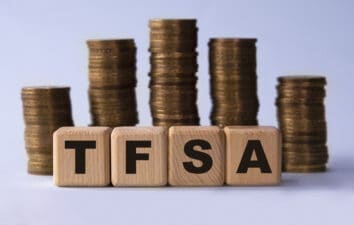Having a strong preference for Canadian stocks isn’t uncommon among local investors, and, in some cases, it’s perfectly rational.
For instance, avoiding currency conversion fees and benefiting from the tax efficiencies offered by Canadian dividends makes sense.
However, if your portfolio leans heavily towards Canadian stocks simply out of patriotism or familiarity, you might be missing out on broader opportunities.
Despite the comfort of investing at home, there are compelling reasons to diversify your investments, especially towards the U.S. market, which is the largest and most liquid in the world.
Here’s a deeper look at why expanding your investment horizon to include U.S. stocks is a strategic move, along with an exchange-traded fund (ETF) that I personally like for easy access to the U.S. market.
Sector diversification
Sector diversification is a significant issue when comparing the Canadian stock market to its U.S. counterpart, primarily due to the outdated composition of our local market.
In Canada, the predominant sectors are energy and financials—specifically, oil companies and banks. Unfortunately, our energy sector often struggles under restrictive governmental policies, and our banking sector, despite its size and stability, shows little innovation and remains largely unchanged over the years.
In contrast, the U.S. market is a breeding ground for innovative companies, particularly in technology and healthcare. Even the American financial institutions dwarf Canadian banks in terms of their balance sheets and scope of services.
If you limit your investments to Canada, you’re essentially playing monopoly—betting on property, railways, banks, and utilities. It’s a strategy that may seem safer but is painfully antiquated.
60% of the world’s stock market
Another compelling reason to consider diversifying into U.S. stocks is the sheer scale of opportunity you miss by focusing too heavily on Canada.
When we look at global market capitalization, Canada represents a meagre 3% of the MSCI World Index. This pales in comparison to the U.S., which makes up a staggering 70% of the index.
This disparity is crucial for understanding market exposure. If, for instance, your portfolio has 60% of its assets in Canadian stocks, you’re over-weighting Canada nearly 20 times relative to its global market presence.
While having a 30% allocation (approximately 10 times its global weight) might be more reasonable, excessively concentrating on Canadian stocks can severely limit your investment opportunities and potential returns.
The ETF to use
For affordable and broad U.S. market exposure, I like Vanguard U.S. Total Market Index ETF (TSX:VUN).
This ETF encapsulates what its name promises—it holds an extensive portfolio of over 3,500 U.S. stocks across all market caps: small, mid, and large. This includes stocks from all 11 sectors, offering a comprehensive slice of the American market.
In terms of fees, VUN is competitively priced with a management expense ratio of only 0.16%.
This means that for every $10,000 you invest in the ETF, the annual fees would be just about $16—a small price to pay for such extensive diversification across the top-performing U.S. market.








